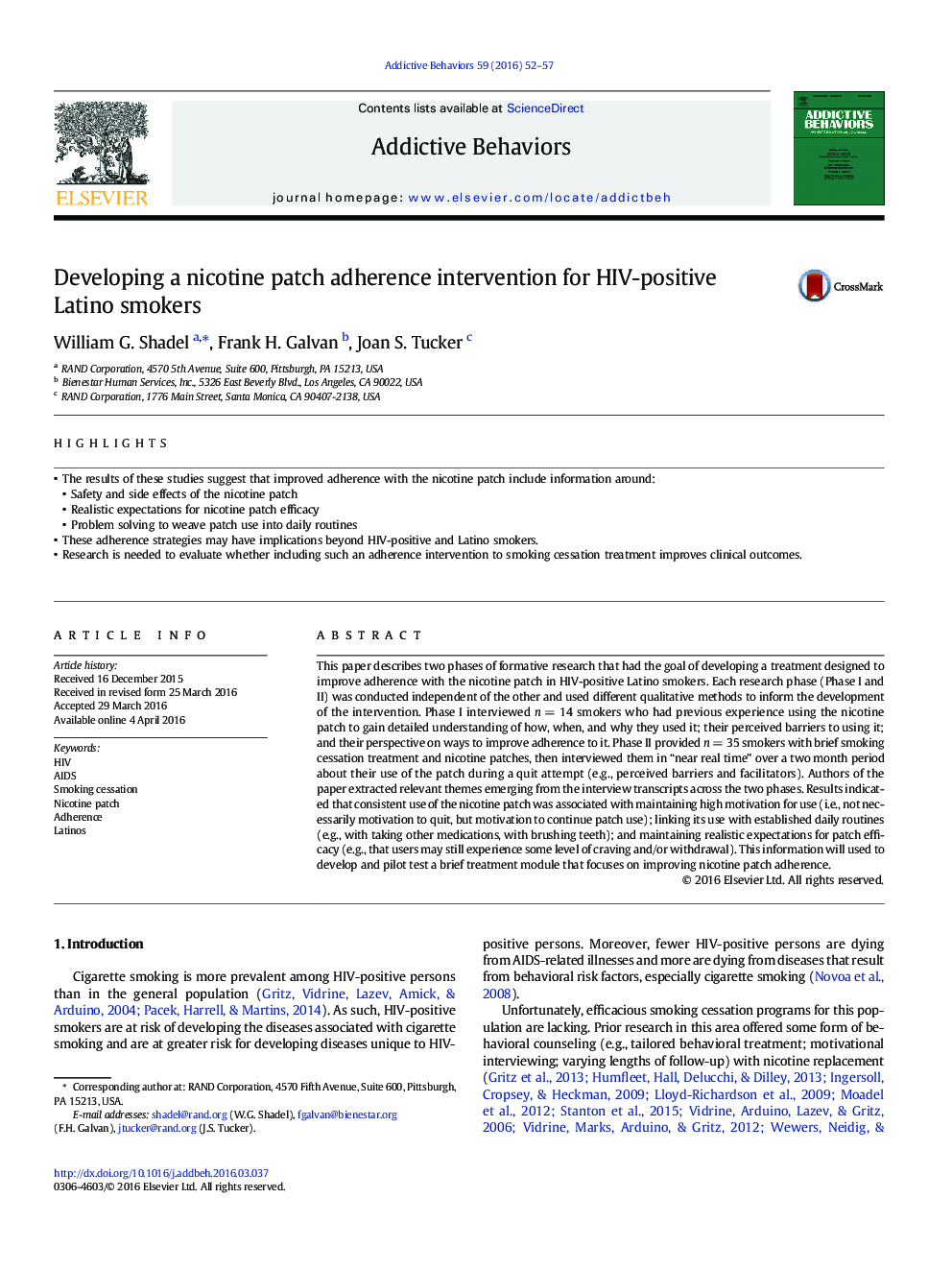| Article ID | Journal | Published Year | Pages | File Type |
|---|---|---|---|---|
| 7260124 | Addictive Behaviors | 2016 | 6 Pages |
Abstract
This paper describes two phases of formative research that had the goal of developing a treatment designed to improve adherence with the nicotine patch in HIV-positive Latino smokers. Each research phase (Phase I and II) was conducted independent of the other and used different qualitative methods to inform the development of the intervention. Phase I interviewed n = 14 smokers who had previous experience using the nicotine patch to gain detailed understanding of how, when, and why they used it; their perceived barriers to using it; and their perspective on ways to improve adherence to it. Phase II provided n = 35 smokers with brief smoking cessation treatment and nicotine patches, then interviewed them in “near real time” over a two month period about their use of the patch during a quit attempt (e.g., perceived barriers and facilitators). Authors of the paper extracted relevant themes emerging from the interview transcripts across the two phases. Results indicated that consistent use of the nicotine patch was associated with maintaining high motivation for use (i.e., not necessarily motivation to quit, but motivation to continue patch use); linking its use with established daily routines (e.g., with taking other medications, with brushing teeth); and maintaining realistic expectations for patch efficacy (e.g., that users may still experience some level of craving and/or withdrawal). This information will used to develop and pilot test a brief treatment module that focuses on improving nicotine patch adherence.
Related Topics
Life Sciences
Neuroscience
Behavioral Neuroscience
Authors
William G. Shadel, Frank H. Galvan, Joan S. Tucker,
